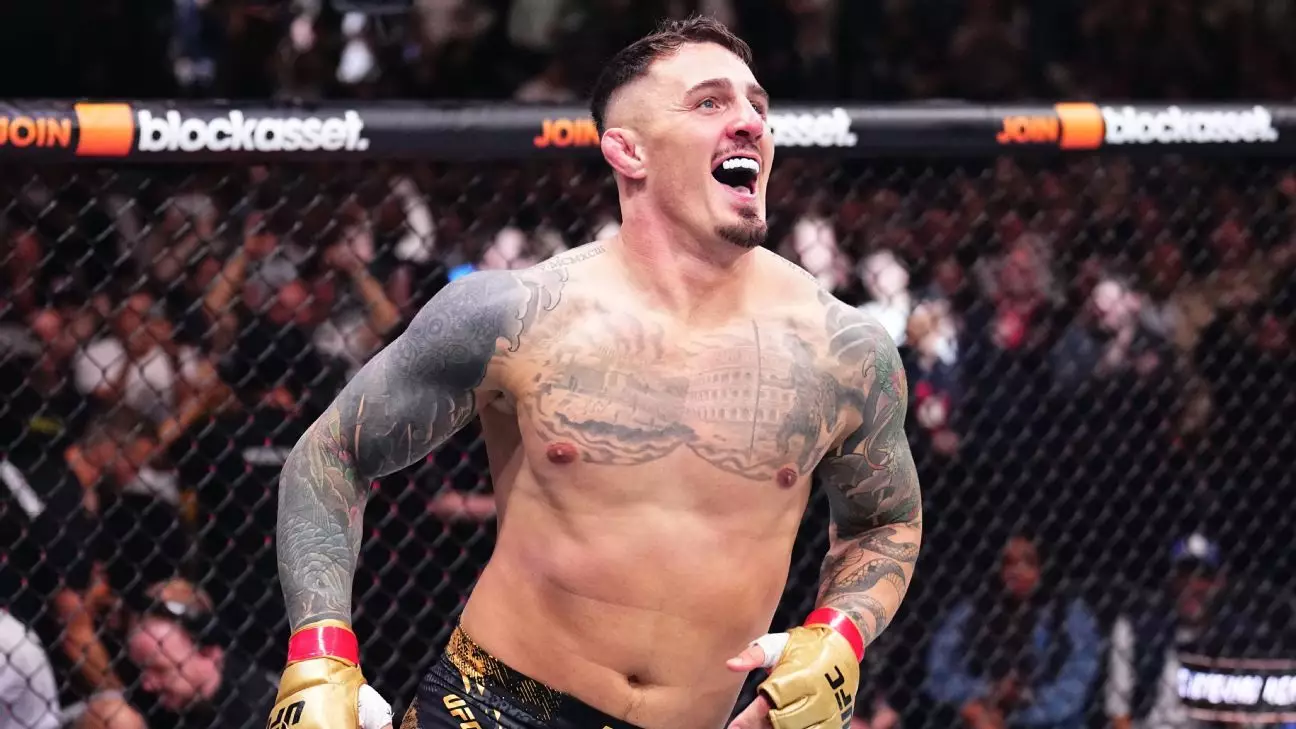The retirement of Jon Jones marks a pivotal turning point for the UFC’s heavyweight division. Once a landscape crowded with legendary figures, his exit leaves a significant void, both in terms of star power and competitive depth. While Jones’s legend is secure, his prolonged hesitation before retirement, coupled with an unfinished chapter of seemingly declining motivation, cast a shadow over his legacy. His decision not to fight Tom Aspinall, the rising star, fosters disappointment among fans expecting a grand showdown. It illustrates a broader trend in combat sports: great champions often struggle with the transition from dominance to retirement, sometimes leaving fans craving closure. Jones’s narrative, full of brilliance but marred by indecisiveness, highlights the importance of a well-managed exit—something he, perhaps, failed to fully execute.
In the immediate aftermath, the heavyweight scene appears to lack a clear successor. Aspinall’s ascendancy is noteworthy, but at just 30 years old, he represents a new breed: skilled yet somewhat untested against true heavyweight heavyweights with established reputations. His quick finishes and impressive résumé evoke admiration, but questions remain about whether he can sustain his dominance once the level of competition levels up. The division’s future hinges on whether Aspinall can capitalize on this momentum or if veteran fighters will rise from the shadows to challenge his newly earned throne.
Stars in the Making: Aspinall and Gane as Potential Titans
Sergei Pavlovich, Curtis Blaydes, and Alexander Volkov are slightly more experienced, yet each bears inconsistencies that make it difficult to envision them as long-term champions. Aspinall’s record, elevated by seven first-round finishes in nine UFC appearances, sets a high bar, but it also invites skepticism. First-round dominance, while visually appealing, can sometimes mask vulnerabilities against more seasoned opponents. Moreover, his relatively young age suggests he has time to improve, but it also means he’s yet to face those who can test his composure and adaptability.
On the other hand, Ciryl Gane’s potential as Aspinall’s foil injects excitement into the division. Gane’s technical prowess, combined with his physical tools, indicates he has the capacity to disrupt Aspinall’s trajectory—if he can iron out deficiencies in grappling and mental resilience. Their hypothetical matchup promises to be an intriguing chess match, pitting Aspinall’s raw aggression against Gane’s finesse and strategic mindset. A rivalry between these two could catalyze the division’s evolution, transforming a slow-moving division into a compelling narrative.
However, the division’s excitement won’t be sustained solely through prospects like Aspinall and Gane. The real game-changer may lie in a potential super fight involving Alex Pereira. Transitioning from middleweight and light heavyweight stardom, Pereira’s move to heavyweight opens doors to cross-division intrigue. A showdown between Aspinall and Pereira would be more than a mere title fight; it would be a statement about the division’s future and the UFC’s marketing capacity. Yet, Pereira’s undersized stature for a heavyweight and his ongoing commitments at 205 pounds pose logistical and competitive challenges that might dampen enthusiasm.
Veterans and the Path to Relevance
Amidst these emerging talents, veteran fighters like Derrick Lewis remain relevant—if not pivotal—for maintaining audience engagement. Lewis, with a decade’s worth of experience and notable knockout power, possesses a dedicated fan base and the ability to produce electrifying moments. If he secures a victory this weekend, it could reignite interest in matchups like Aspinall vs. Lewis, blending the appeal of rising star versus fan favorite. From a strategic standpoint, the UFC might leverage Lewis’s popularity to propel Aspinall’s title run, even if it appears somewhat counterintuitive from a rankings perspective.
More broadly, the heavyweight division faces an uphill battle in establishing a sustained narrative. For a sport that thrives on big personalities and memorable rivalries, the absence of Jones’s magnetic presence leaves a void. Aspinall’s record and style impress, yet lack of name recognition limits his immediate mainstream appeal. He’s quietly building a formidable résumé, but without the star power that comes from facing proven legends, his ascent risks feeling somewhat hollow. The division’s history—marked by fighters like Fedor, Cro Cop, and Cain Velasquez—has shown that true greatness often depends on iconic rivalries, battles that resonate beyond the cage.
In light of Jones’s absence, the focus shifts to who can fill the void. The UFC’s challenge is to craft compelling stories that elevate lesser-known fighters to superstardom. The path forward involves not only nurturing the next generation but also carefully matchmaking veterans and emerging talents to forge narratives that captivate fans. Heavyweight MMA, inherently volatile due to its power-based nature, demands stars willing to risk their reputations in high-stakes battles. Whether Aspinall, Gane, or surprise contenders will rise to meet this challenge remains uncertain, yet their development is crucial for the vibrancy of the division.
The heavyweight division’s future hinges on the delicate balance between promising prospects, seasoned veterans, and the strategic narratives the UFC chooses to promote. As the sport eyes new horizons, it’s clear that the next era will be shaped not just by who wins the next bout but by how the promotion manages storytelling, rivalries, and the cultivation of new legends. The question isn’t solely about who will be champion next—it’s about which fighters will define the narrative that keeps fans invested for years to come.

